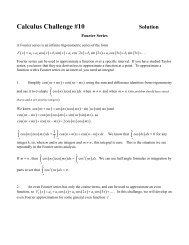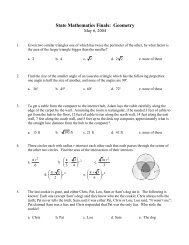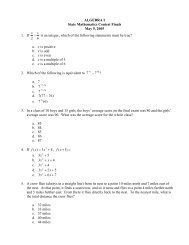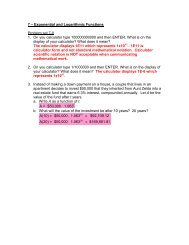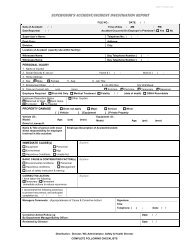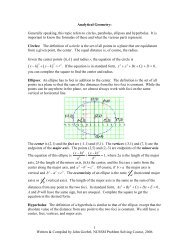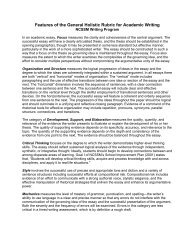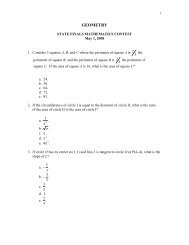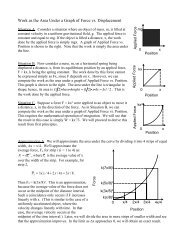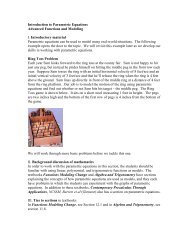NCSSM COURSE CAtAlOG - North Carolina School of Science and ...
NCSSM COURSE CAtAlOG - North Carolina School of Science and ...
NCSSM COURSE CAtAlOG - North Carolina School of Science and ...
You also want an ePaper? Increase the reach of your titles
YUMPU automatically turns print PDFs into web optimized ePapers that Google loves.
This course involves the study <strong>of</strong> music <strong>and</strong> dance <strong>of</strong> various world cultures.<br />
Music <strong>and</strong> dance are universal forms <strong>of</strong> human artistic expression <strong>of</strong> the cultural<br />
values <strong>of</strong> every civilization. In each society, music <strong>and</strong> dance reflect the unique<br />
aesthetic, religious, philosophical, <strong>and</strong>/or governmental influences on that<br />
society. Music <strong>of</strong> a civilization is also strongly related to the tonal inflections <strong>of</strong><br />
the local language. Primary areas <strong>of</strong> study include the music, dance, <strong>and</strong><br />
societal values <strong>of</strong> India, the Middle East, Africa, Latin America, Native America,<br />
Europe, China, Japan, <strong>and</strong> Indonesia.<br />
IE312 History <strong>of</strong> Western Music<br />
One trimester<br />
Credit: One unit core elective credit.<br />
Meeting pattern: Three periods per week.<br />
This course is a chronological survey <strong>of</strong> Western music focusing primarily on the<br />
Baroque, Viennese, <strong>and</strong> Romantic eras <strong>of</strong> Western music history. Students use<br />
music <strong>and</strong> listening as a vehicle to underst<strong>and</strong>ing theoretical <strong>and</strong> historical<br />
trends <strong>of</strong> each stylistic period. Stylistic <strong>and</strong> composer overviews <strong>of</strong> the eras serve<br />
as a conceptual focus for the music that follows in each historical period.<br />
IE314 American Popular Song<br />
One trimester<br />
Credit: One unit core elective credit.<br />
Meeting pattern: Three periods per week.<br />
American music <strong>of</strong> the twentieth century represents a unique interaction <strong>and</strong><br />
collaboration <strong>of</strong> composers, lyricists, <strong>and</strong> musicians from European <strong>and</strong> African<br />
American cultures. The music <strong>of</strong> this period represents a truly “American” style<br />
that resulted from a cultural blend <strong>of</strong> musical theater with ragtime, blues, <strong>and</strong><br />
jazz. This course focuses on social, musical, <strong>and</strong> technological factors that<br />
shaped this music. The course includes the study <strong>of</strong> music <strong>and</strong> lyrics through<br />
listening <strong>and</strong> class discussion, a survey <strong>of</strong> the great singers, composers, <strong>and</strong><br />
lyricists <strong>of</strong> the time, as well as historical influences on <strong>and</strong> <strong>of</strong> American culture<br />
during the twentieth century.<br />
IE316 Twentieth-Century Music History<br />
One trimester<br />
Credit: One unit core elective credit.<br />
Meeting pattern: Three periods per week.<br />
This course is a chronological survey <strong>of</strong> twentieth-century music, focusing<br />
primarily on the late Romantic era, Impressionism, Expressionism, Nationalism,<br />
Serialism, <strong>and</strong> twentieth-century American music. Students use music <strong>and</strong><br />
listening as a vehicle to underst<strong>and</strong>ing theoretical <strong>and</strong> historical trends <strong>of</strong> each<br />
90




